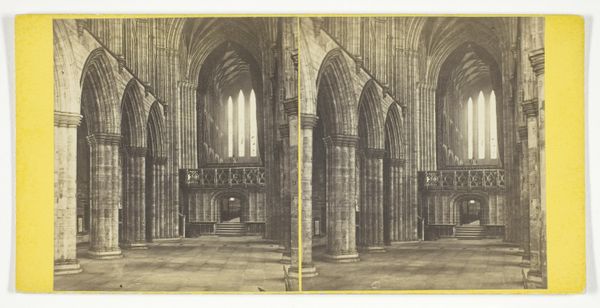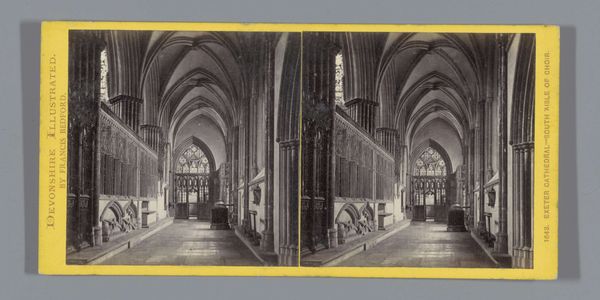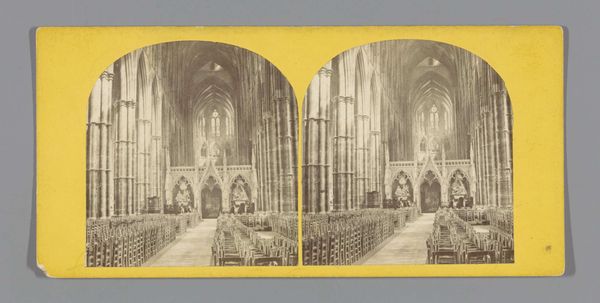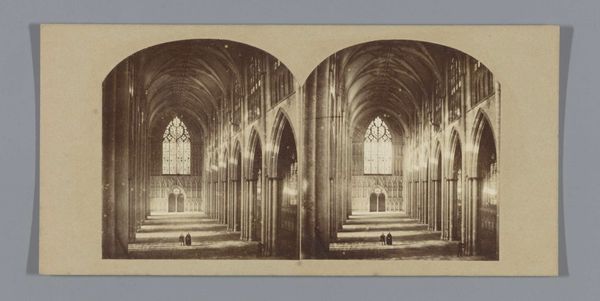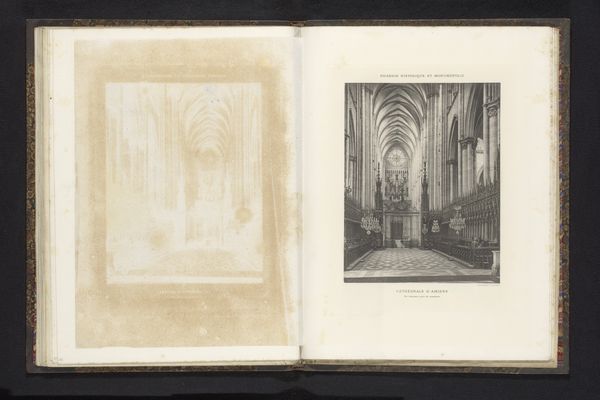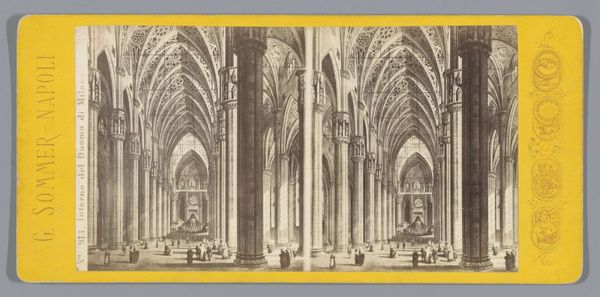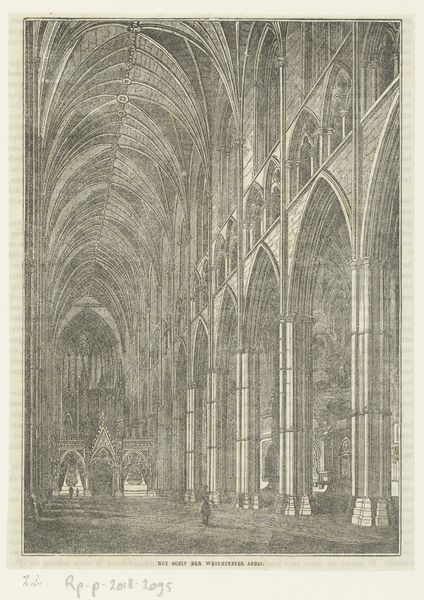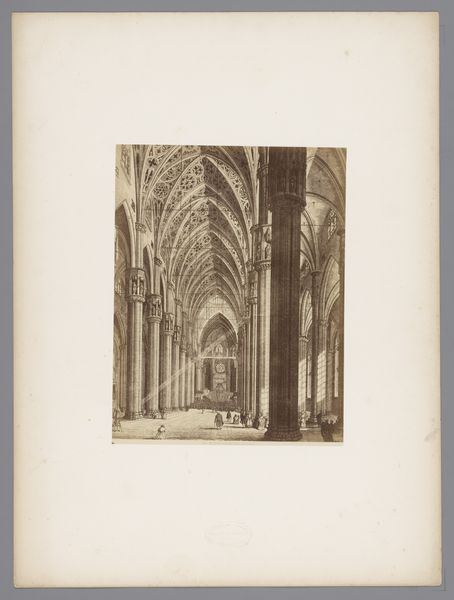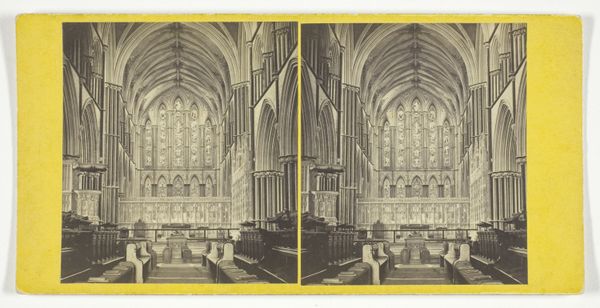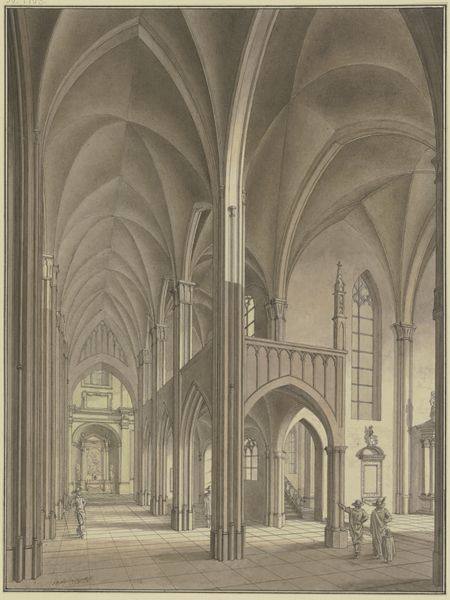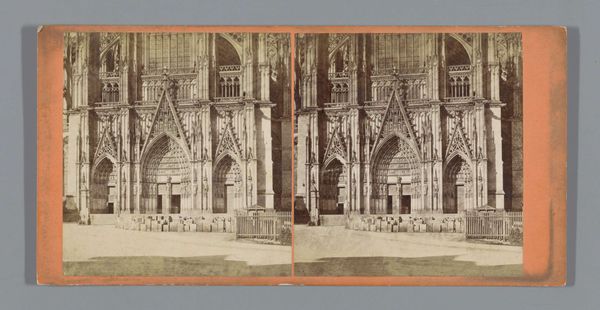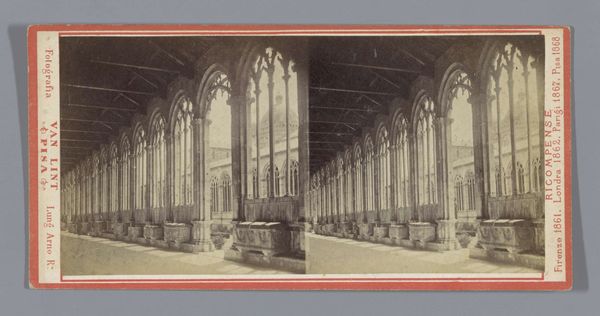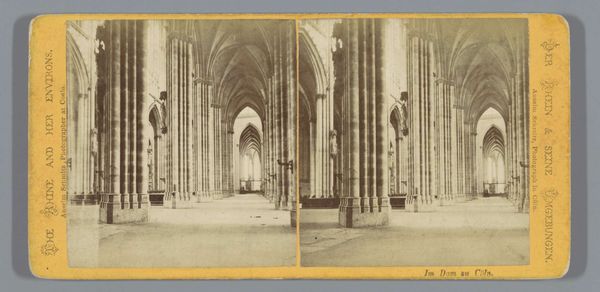
Dimensions: height 85 mm, width 170 mm
Copyright: Rijks Museum: Open Domain
Curator: Today, we’re looking at "Interior of Gloucester Cathedral", a photograph captured by H. Petschler & Co. sometime between 1850 and 1880, crafted as a gelatin silver print. Editor: My first thought is how starkly powerful it is! The converging lines create an immediate sense of grandeur and depth, but almost unsettling in its emptiness. Curator: The image certainly employs strong linear perspective. Note how the repeated verticality of the columns, combined with the arching ribs of the vaulting, draw the eye inexorably towards that central stained-glass window. It’s a classic architectural framing technique. Editor: Indeed. Symbolically, that window becomes a focal point – the light source, the divine presence. Gothic cathedrals are replete with symbolism; every detail had theological significance intended to inspire awe and reinforce the Church's authority. The vastness aims to diminish the individual and inspire spiritual humility. Curator: While appreciating the intended effect, let's consider the more immediate visual components. The grayscale tones emphasize texture—the rough-hewn stone versus the smoother glass. And the photograph’s composition places us, the viewer, firmly within that structured space. It evokes a sense of controlled rhythm and stark symmetry. Editor: Looking at it, I consider all the rituals, the coronations, the history imprinted into the stone of the cathedral. All those kings and queens, knights and commoners all who came and gone through its gates. Those figures may still reside there in their iconography displayed in every panel. It also reflects the cultural revival of interest in medievalism during the Romantic period, a fascination with the past. Curator: Precisely, though, viewed purely as an arrangement of light and form, the photograph highlights how manipulating tonal values, texture, and shape can construct an illusion of three-dimensional space. A powerful piece using only photography to inspire contemplation. Editor: Yes, and by recognizing the cathedral as a vessel, you may understand the meaning and appreciate the layers it presents through shape and symbolism. Curator: Well said!
Comments
No comments
Be the first to comment and join the conversation on the ultimate creative platform.
